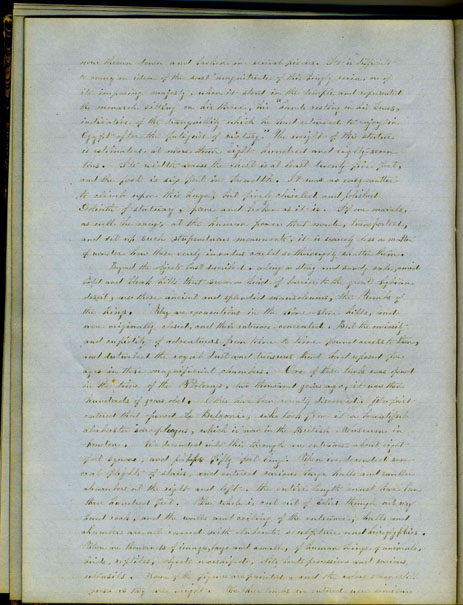Travel
Diary of Mrs. R.P. Eaton:
Europe,
Egypt, and Palestine, ca. 1857

Beyond the objects last described, along a story and sandy vale, amid
bold and bleak hills that seem a kind of barrier to the great Lybian desert,
are those ancient and splendid mausoleums, the tombs of the kings. They
are excavations in the lime-stone hills, and were originally closed, and
their entrance concealed. But the curiosity
and cupidly of adventures from time to time found access to them, and
disturbed the royal dust and treasures that had reposed for ages in these
magnificent chambers one of these tombs was opened in the time of the
Ptolemys, two thousand years ago, it was them,
hundreds of years old. Others have been recently discovered. We first
entered that opened by Belgone, who took from it a beautiful alabaster
sarcophagus, which is now in the British Museum in London. We descended
into this through an entrance about eight
feet square, and perhaps fifty-feet long then we descended several flights
of stairs, and entered various large halls and smaller chambers of the
right and left, the entire length must have from three hundred feet. The
whole is cut out of solid though not very hard rock, and the walls and
ceiling of the entrance, halls and chambers are all covered with elaborate
sculpture and hieroglyphics. There are thousands of images, large and
small, of human kings, of animals, kinds, reptiles, objects worshiped,
Nile boots processions and
utensils. Some of the figures are painting, and the colors seem still
fresh as they are bright. The other tombs we entered were similar